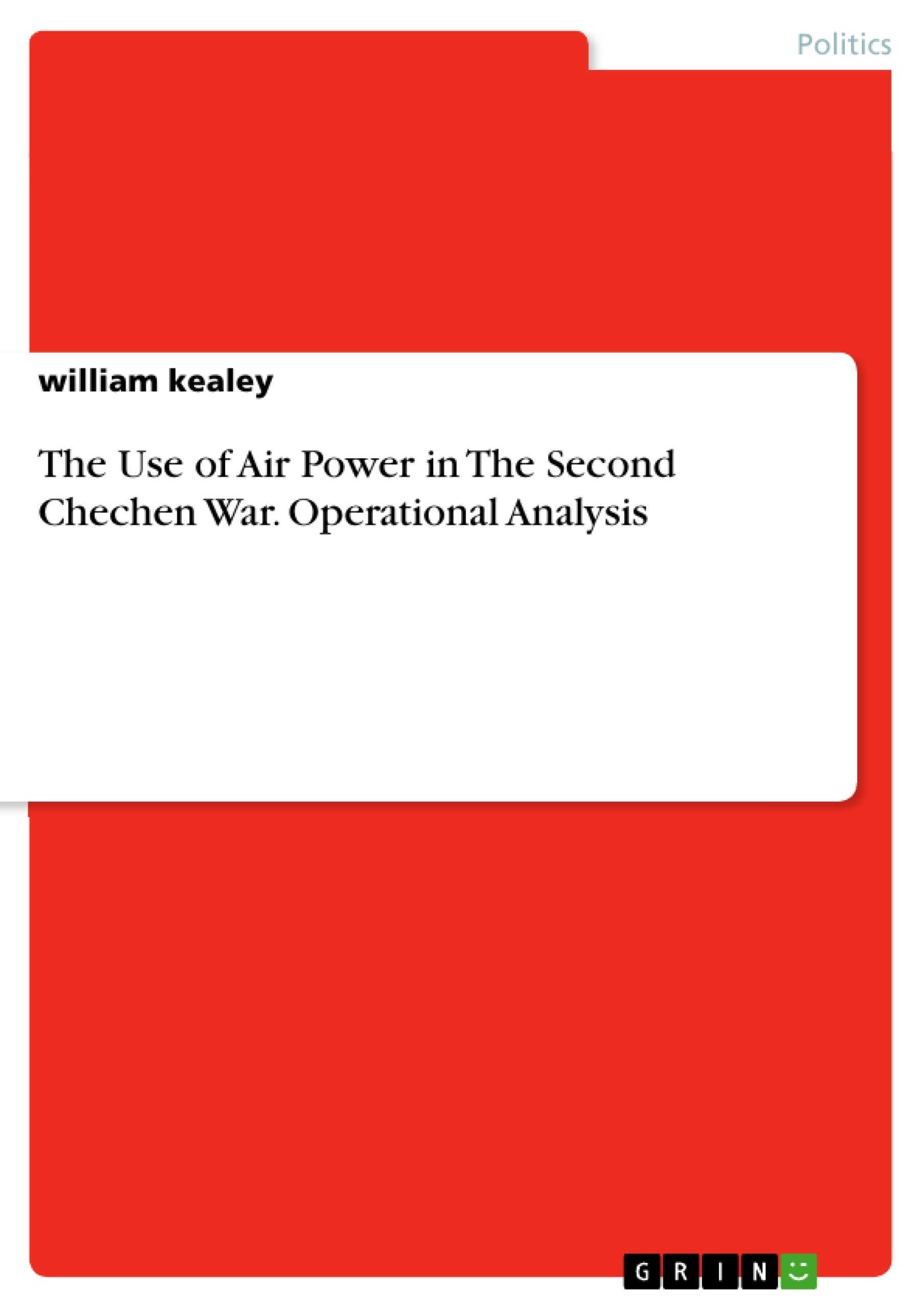Since this document primarily focuses on the role of air power within the confines of the latter of the two conflicts, the analysis will be strictly related to just that as opposed to broader military operational analysis, only with occasional reference to the former conflict of 1994-1996.
The role of Russian air power throughout the first conflict varies significantly when contrasted with that of the second. This, as will be discussed later, is primarily a result of the lessons learnt from the first conflict- which is generally conceded as a Russian operational failure since Chechnya still remained a de facto independent state following the declaration of the 'Khasavyurt Accords' resulting in a ceasefire in 1996. The second conflict on the other hand, can be considered, at least in operational terms, successful since Russia restored federal control of the territory.
Defence cuts and structural problems within the Russian air force attributed to a defeat in the first conflict and a 'humiliating victory' (Haas, D.M: 2004; 1-18) in the second. Although the air force was not the only branch of the Russian military that faced defence cuts, it was perhaps arguably the most strategically indispensible in a conflict which had been suggested by the then Russian Defence Minister Pavel Grachev, as an opportunity to exhibit Russia's rapid deployment capabilities. The conclusions of both conflicts are a result of the Russian air force not being utilised effectively- or rather unable to be utilised to the extent required within a theatre of war constituted by counter insurgency combat.
Nevertheless, Russian air power was used extensively and considered to be paramount in strategic discourse throughout both conflicts (Malek. M: 2009; 8-12)
Inhaltsverzeichnis (Table of Contents)
- Abstract
- Background
- FIRST CHECHEN WAR:
- SECOND CHECHEN WAR:
- Air Campaign- Counter-Air Operations.
- Air Campaign- Anti-Surface Air Operations/Strategic Air Operations.
- The Air Campaign- Strategic Air Operations Cont. /Supporting Air Operations/-Air Tactics
- The Air Campaign- Air Tactics Cont/Russian Air Force Acknowledgement of Air Power
- Objectives and Lessons To Be Learnt From First Chechen War.
- The Air Campaign- Lessons To Be Learnt From First Chechen War Cont/Failures and Problems of Russian Air Power.
- The Air Campaign- Failures and Problems of Russian Air Power
- The Air Campaign- Failures and Problems of Russian Air Power Cont./Concluding Points On Russian Air Power.
- The Air Campaign- Concluding Points On Russian Air Power Cont.
Zielsetzung und Themenschwerpunkte (Objectives and Key Themes)
This document provides an operational analysis of the Russian air campaigns during both Chechen wars, emphasizing the use of air power in the Second Chechen War and its relevance to counter-insurgency operations. It examines the lessons learned from the first conflict, highlighting the challenges and successes of the Russian air force in both campaigns.
- The impact of the First Chechen War on Russian military doctrine and air power utilization.
- The strategic role of Russian air power in the Second Chechen War, including its effectiveness and limitations.
- The adaptation of western models of air power by the Russian air force in the Second Chechen War.
- The use of air power in counter-insurgency operations and its effectiveness in achieving specific objectives.
- The evolving nature of warfare and the role of air power in contemporary conflicts.
Zusammenfassung der Kapitel (Chapter Summaries)
The Abstract provides an overview of the document's focus on the role of air power in the Second Chechen War, highlighting the contrast between the two conflicts. The Background section delves into the origins of the First Chechen War, exploring the motives behind Chechnya's declaration of independence and the Russian response. The Second Chechen War section analyzes the events leading to the conflict, including the series of bombings in Moscow and Volgodonsk, the invasion of Dagestan, and the Russian invasion of Chechnya. The subsequent chapters delve into the details of the air campaign, examining the counter-air operations, anti-surface air operations, strategic air operations, supporting air operations, air tactics, and the Russian air force's acknowledgement of the importance of air power. The analysis also explores the lessons learned from the First Chechen War, focusing on the failures and problems of Russian air power and how these issues were addressed in the Second Chechen War.
Schlüsselwörter (Keywords)
This document focuses on key concepts such as air power, counter-insurgency operations, the Chechen Wars, Russian military doctrine, strategic analysis, operational effectiveness, air tactics, lessons learned, and the impact of western models of air power. The document aims to provide a comprehensive analysis of the use of air power in the Second Chechen War, highlighting its significance in contemporary military operations.
- Quote paper
- william kealey (Author), 2013, The Use of Air Power in The Second Chechen War. Operational Analysis, Munich, GRIN Verlag, https://www.grin.com/document/267121



